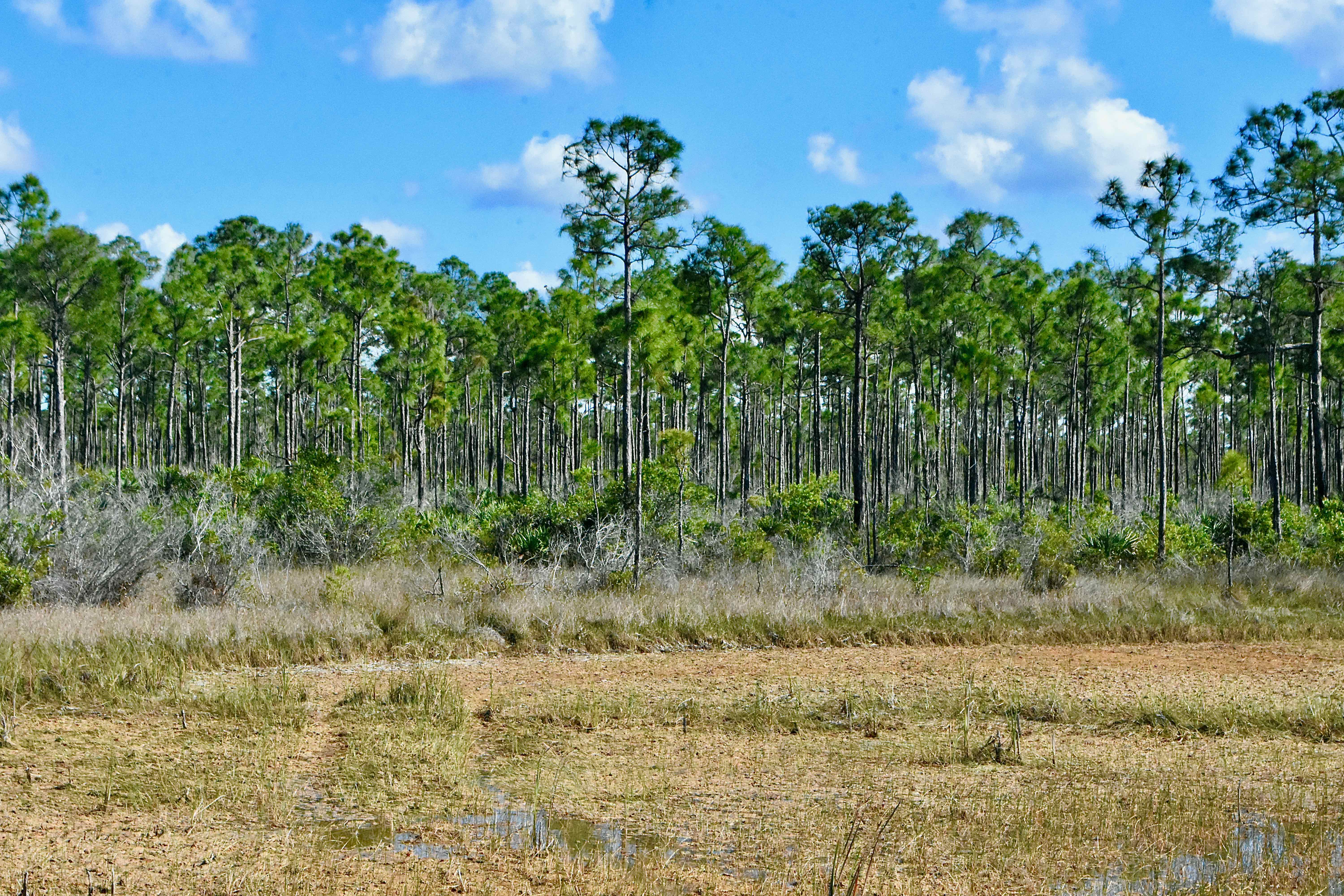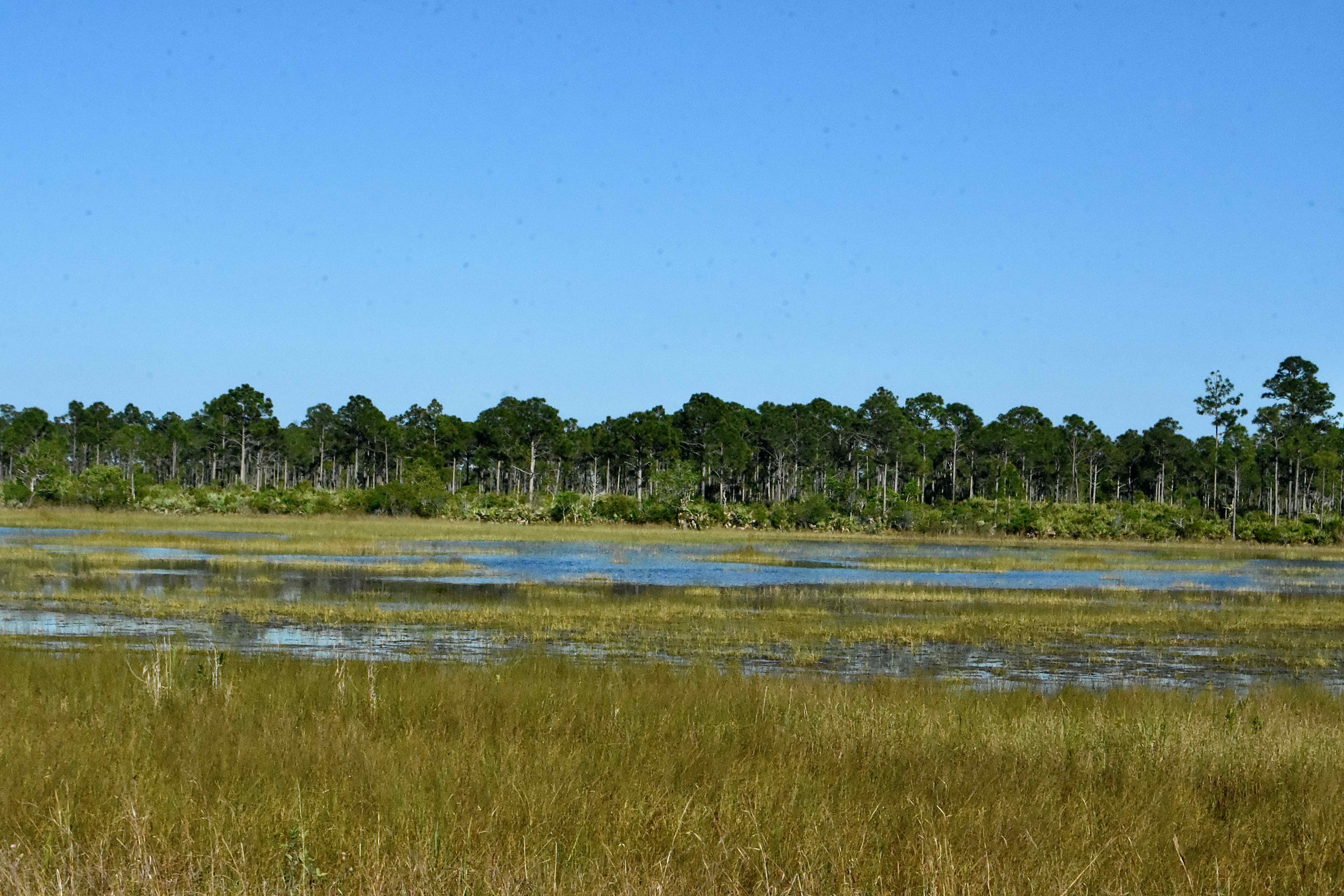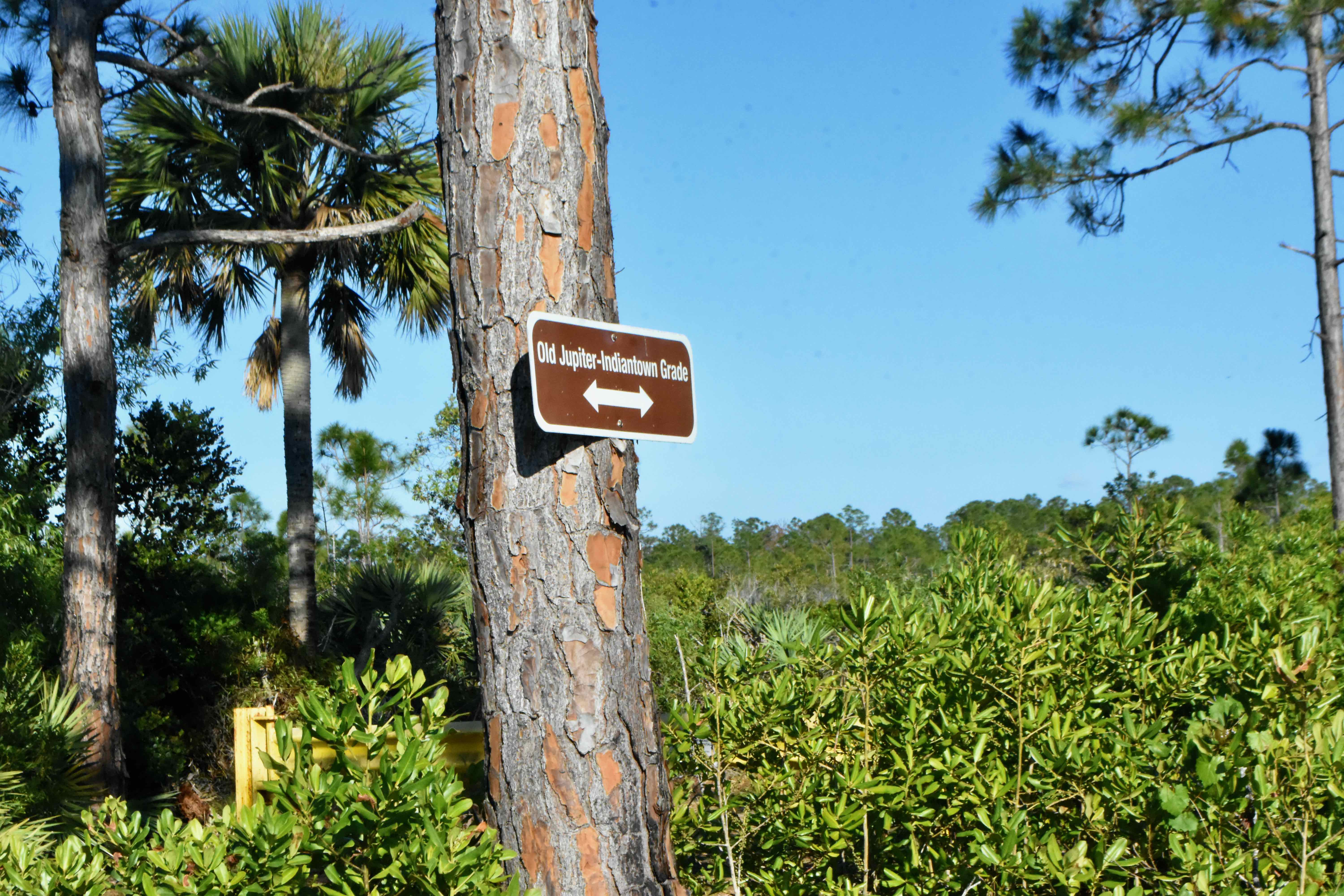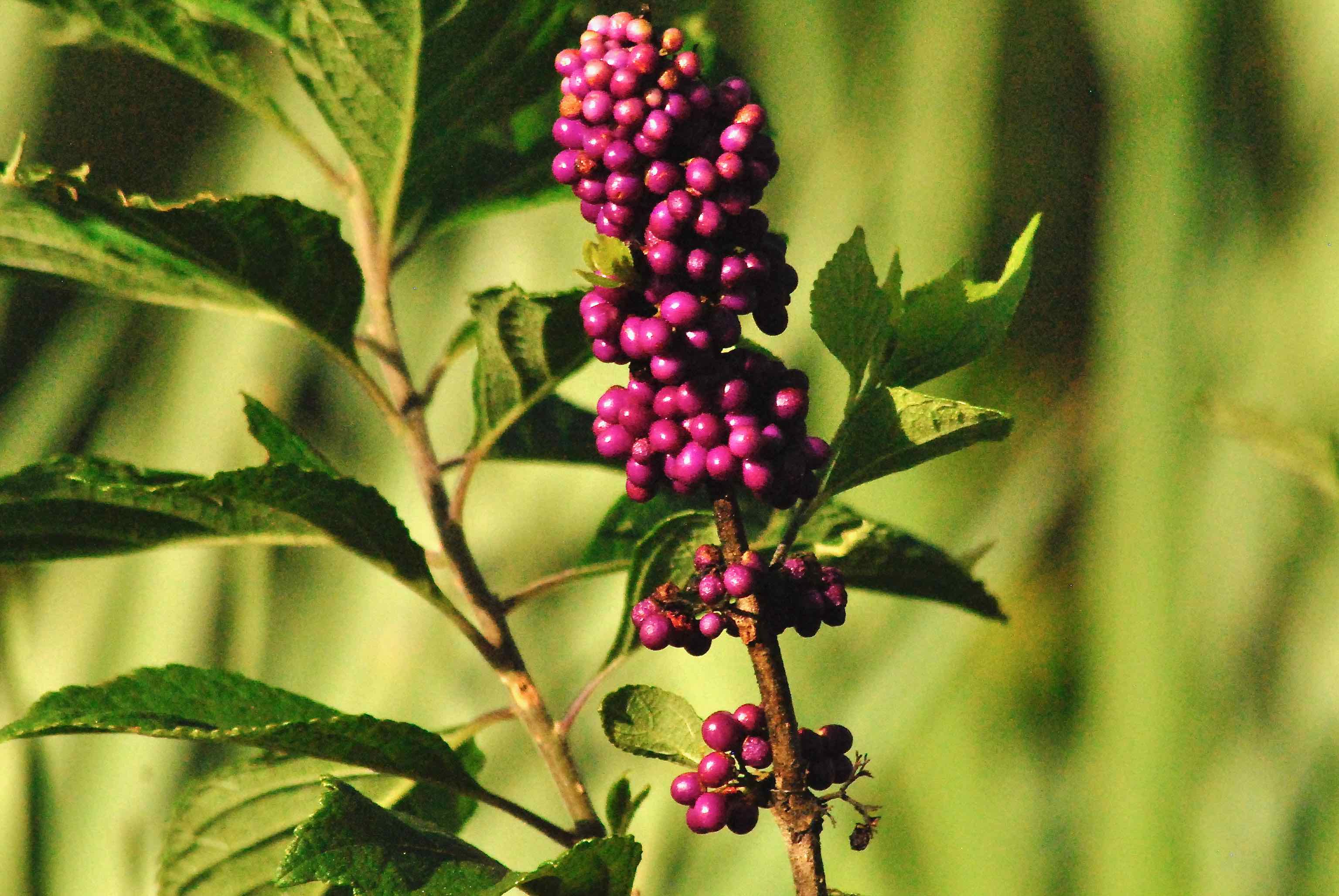Overview: Of all the preserves, parks and conservation areas we've visited over the last few years, this place, the Jones/Hungryland Wildlife and Environmental Area ranks among the most beautiful. It's vista after vista, pinelands, marsh and wet prairie. Water is the defining feature throughout its 16,000-plus acres, which is what you'd expect since the land is part of the historic Hungryland Slough.
In essense, Jones/Hungryland is split in two major sections, east and west, by Pratt Whitney Road. It sits in both Palm Beach and Martin counties. The major feature of the west is an east-west canal dug decades ago as part of a failed attempt to drain and develop the area. Roads run along either side of the canal and are connected by a bridge. Another canal runs north, and a road follows it into the interior of Jones/Hungryland. You can explore by car, getting out at points of interest. On the east side, variously known as Pal-Mar and Nine Gems, there are hiking trails, including the Old Jupiter Indiantown Grade. Two multiuse loop trails totaling 7.11 miles cut through the tract.
Indiantown Road forms the southern boundary of Jones/Hungryland. The main entrance is along Pratt Whitney about 1.5 miles north of the Beeline Highway, just north of the Palm Beach/Martin county line, as is access to the Old Jupiter Indiantown Grade, now a hiking, biking and equestrian trail. There is parking at the trailheads along Pratt Whitney. Maps are also available at a kiosk at the main entrance. As we said, water is the defining feature, but it's also a limiting feature. We've visited in September and found the roads and trails generally passable but muddy and wet in places. We visited again during a dry spring and still found conditions mucky off the roads and trails
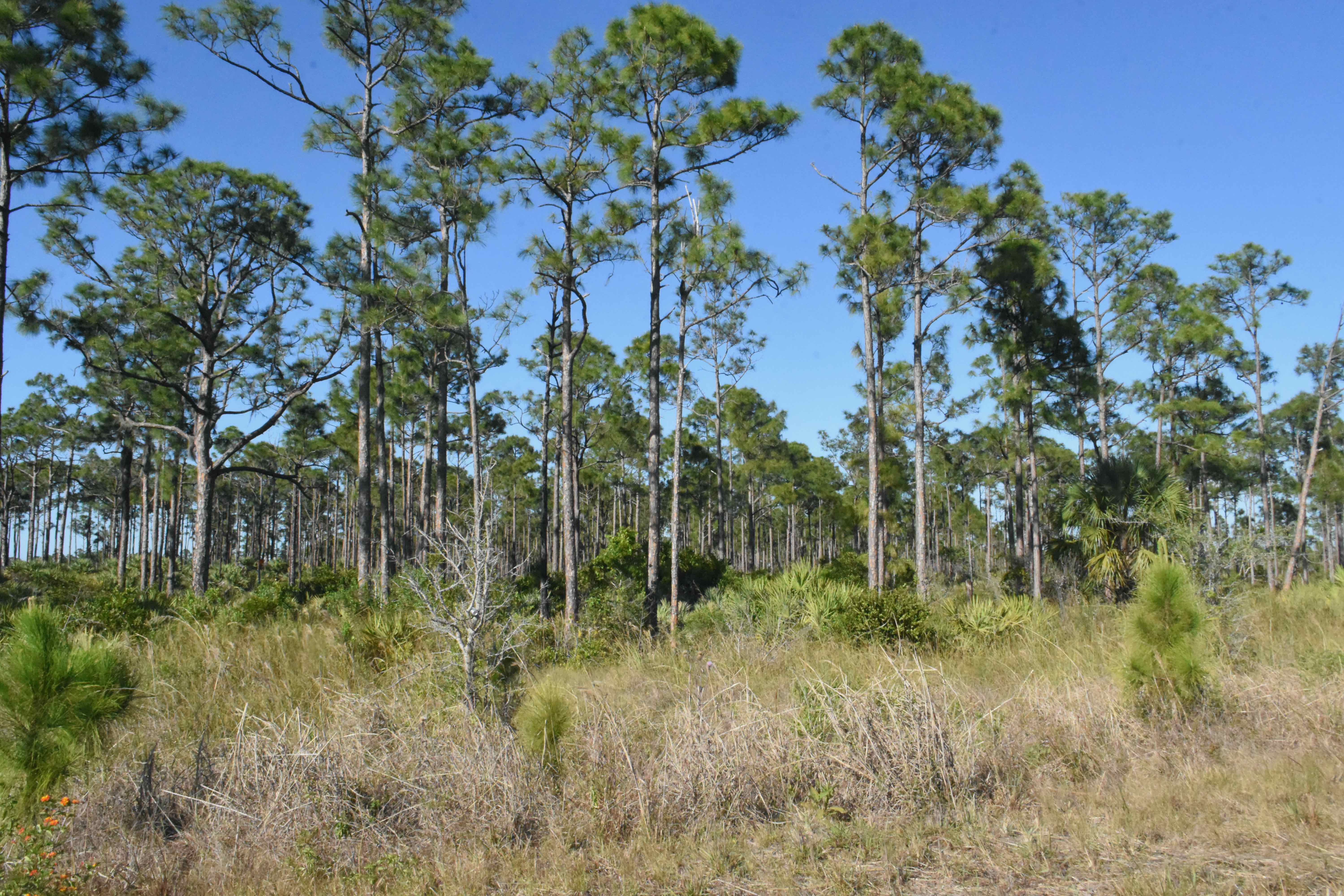
History: The Hungryland Slough fed water south into the Everglades. It was and still is a difficult place to traverse, which made the area valuable as a refuge for Native Americans in the aftermath of the Battle of Loxhatchee during the Second Seminole War. The area also proved to be a difficult place to eek out a living, and the Seminoles who sought refuge there gave it the name, the name, the Hungrylands. European settlers found the place equally difficult as they attempted to graze cattle and grow citrus.
Later, land speculators attempted to develop the land and dug a system of canals to drain it. The canals, however, were dug without proper permits, and Martin County shut down work. The state of Florida bought the 16,600 acres that are now Jone/Hungryland between 1994 and 1999. The name honors John C. and Mariana Jones, environmental activists who worked to preserve the land.
What You'll See: The Jones/Hungryland Wildlife and Environmental Area is renown for its high quality flatwoods, marshes and wet prairies, some of the finest remaining in South Florida. There is a bounty of wildlife here, but you'll have to work to find it. You can see sandhill cranes, great egrets and great blue herons foraging through the wetlands. We've seen hawks, osprey, anhingas, cormorants, wood storks, mockingbirds, cardinals and various doves. Alligators patrol the canals, borrow pits, swamps and marshes. Deer can be found here, as can bobcats, if your lucky. Late winter and spring would seem to be the ideal time to visit, when conditions are drier and migratory species are still here
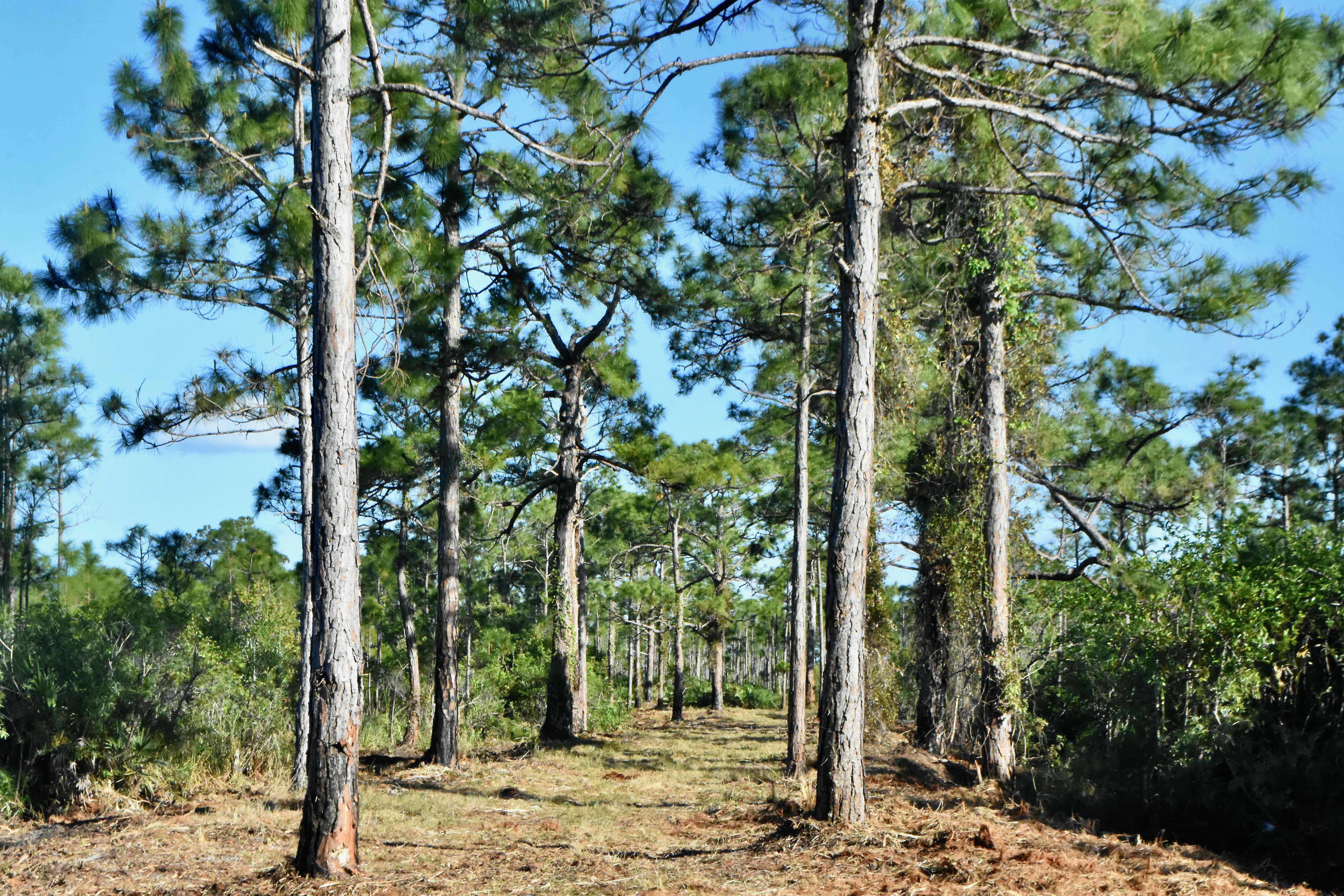
Amenities: There are two loop trails totaling more than seven miles through the eastern section of Jones/Hungryland, variously known as Pal-Mar and Nine Gems. There is adequate parking for cars and horse trailers at the trailhead. Also, there is the Old Jupiter Indiantown Grade, which once was the main road between the coastline and the interior in this part of Florida. It's now a multiuse trail. At the main entrance on the western section, there is a kiosk with area brochures.
Nearby: Jones/Hungryland Wildlife and Environmental Area is adjacent to both J.W. Corbett Wildlife Management Area and the Pine Glades Natural Area. Also in the immediate area: the Dupuis Wildlife and Environmental Area. All told, the four preserves represent nearly 100,000 acres of conserved land.
Links: The Great Florida Birding Trail page for Jones/Hungryland Wildlife and Environmental Area; The Institute for Regional Conservation's plant inventory lists only a single species.
Of Note: Jones/Hungryland Wildlife and Environmental Area is managed by the Florida Fish and Wildlife Conservation Commission and is open 24 hours a day. There is no entrance fee. Permitted activities include hiking, biking, camping, horseback riding, hunting and fishing. Check the FWC site for details on hunting.
Cover Photo: A sandhill crane foraging across a marsh in spring. Also above, a section of pine flatwoods. It looks dry, but taking a few steps toward it tells another story. The Old Jupiter Indiantown Grade. It looks like easy walking, and for the most part it is.
In essense, Jones/Hungryland is split in two major sections, east and west, by Pratt Whitney Road. It sits in both Palm Beach and Martin counties. The major feature of the west is an east-west canal dug decades ago as part of a failed attempt to drain and develop the area. Roads run along either side of the canal and are connected by a bridge. Another canal runs north, and a road follows it into the interior of Jones/Hungryland. You can explore by car, getting out at points of interest. On the east side, variously known as Pal-Mar and Nine Gems, there are hiking trails, including the Old Jupiter Indiantown Grade. Two multiuse loop trails totaling 7.11 miles cut through the tract.
Indiantown Road forms the southern boundary of Jones/Hungryland. The main entrance is along Pratt Whitney about 1.5 miles north of the Beeline Highway, just north of the Palm Beach/Martin county line, as is access to the Old Jupiter Indiantown Grade, now a hiking, biking and equestrian trail. There is parking at the trailheads along Pratt Whitney. Maps are also available at a kiosk at the main entrance. As we said, water is the defining feature, but it's also a limiting feature. We've visited in September and found the roads and trails generally passable but muddy and wet in places. We visited again during a dry spring and still found conditions mucky off the roads and trails

History: The Hungryland Slough fed water south into the Everglades. It was and still is a difficult place to traverse, which made the area valuable as a refuge for Native Americans in the aftermath of the Battle of Loxhatchee during the Second Seminole War. The area also proved to be a difficult place to eek out a living, and the Seminoles who sought refuge there gave it the name, the name, the Hungrylands. European settlers found the place equally difficult as they attempted to graze cattle and grow citrus.
Later, land speculators attempted to develop the land and dug a system of canals to drain it. The canals, however, were dug without proper permits, and Martin County shut down work. The state of Florida bought the 16,600 acres that are now Jone/Hungryland between 1994 and 1999. The name honors John C. and Mariana Jones, environmental activists who worked to preserve the land.
What You'll See: The Jones/Hungryland Wildlife and Environmental Area is renown for its high quality flatwoods, marshes and wet prairies, some of the finest remaining in South Florida. There is a bounty of wildlife here, but you'll have to work to find it. You can see sandhill cranes, great egrets and great blue herons foraging through the wetlands. We've seen hawks, osprey, anhingas, cormorants, wood storks, mockingbirds, cardinals and various doves. Alligators patrol the canals, borrow pits, swamps and marshes. Deer can be found here, as can bobcats, if your lucky. Late winter and spring would seem to be the ideal time to visit, when conditions are drier and migratory species are still here

Amenities: There are two loop trails totaling more than seven miles through the eastern section of Jones/Hungryland, variously known as Pal-Mar and Nine Gems. There is adequate parking for cars and horse trailers at the trailhead. Also, there is the Old Jupiter Indiantown Grade, which once was the main road between the coastline and the interior in this part of Florida. It's now a multiuse trail. At the main entrance on the western section, there is a kiosk with area brochures.
Nearby: Jones/Hungryland Wildlife and Environmental Area is adjacent to both J.W. Corbett Wildlife Management Area and the Pine Glades Natural Area. Also in the immediate area: the Dupuis Wildlife and Environmental Area. All told, the four preserves represent nearly 100,000 acres of conserved land.
Links: The Great Florida Birding Trail page for Jones/Hungryland Wildlife and Environmental Area; The Institute for Regional Conservation's plant inventory lists only a single species.
Of Note: Jones/Hungryland Wildlife and Environmental Area is managed by the Florida Fish and Wildlife Conservation Commission and is open 24 hours a day. There is no entrance fee. Permitted activities include hiking, biking, camping, horseback riding, hunting and fishing. Check the FWC site for details on hunting.
Cover Photo: A sandhill crane foraging across a marsh in spring. Also above, a section of pine flatwoods. It looks dry, but taking a few steps toward it tells another story. The Old Jupiter Indiantown Grade. It looks like easy walking, and for the most part it is.


